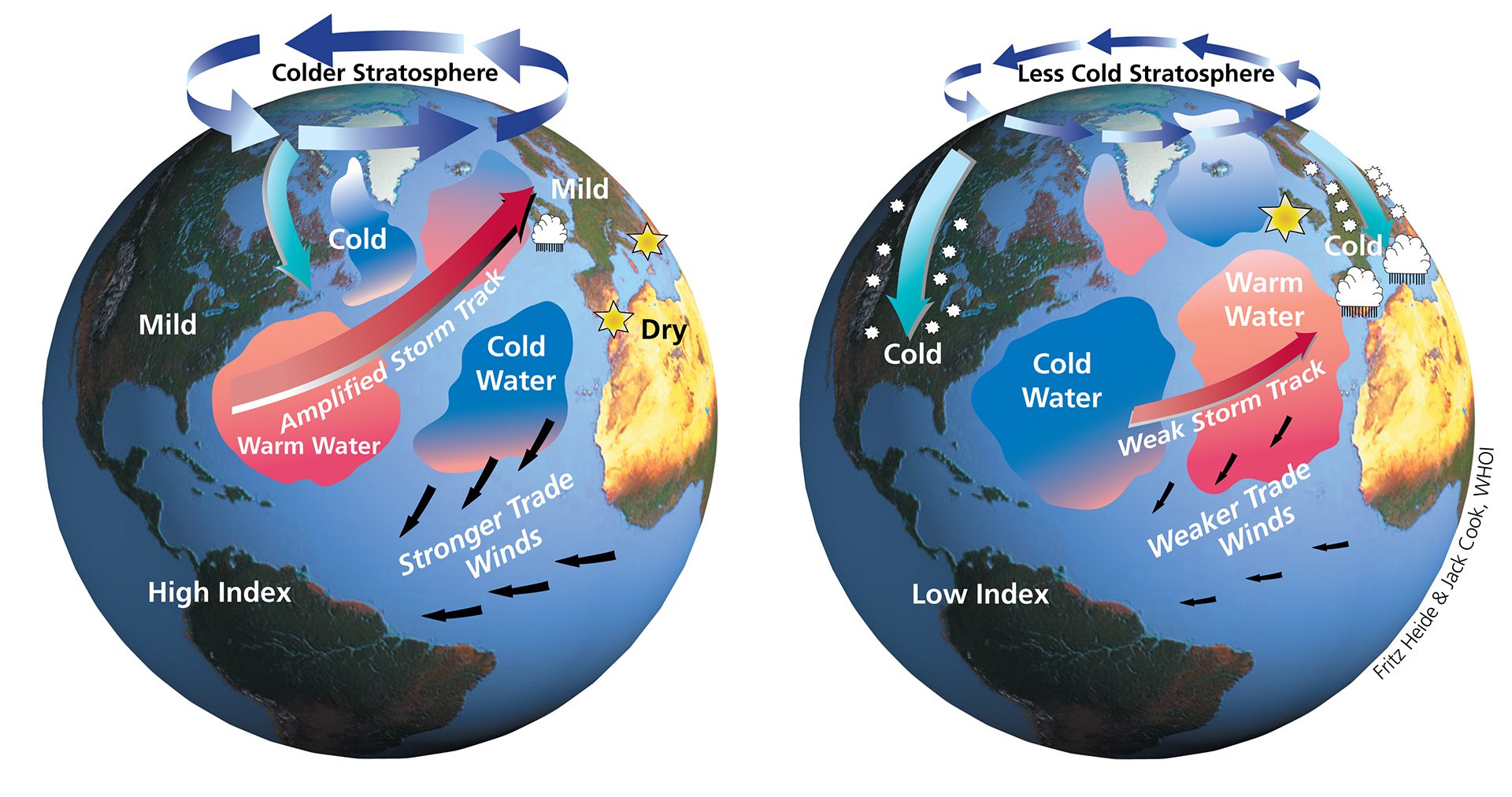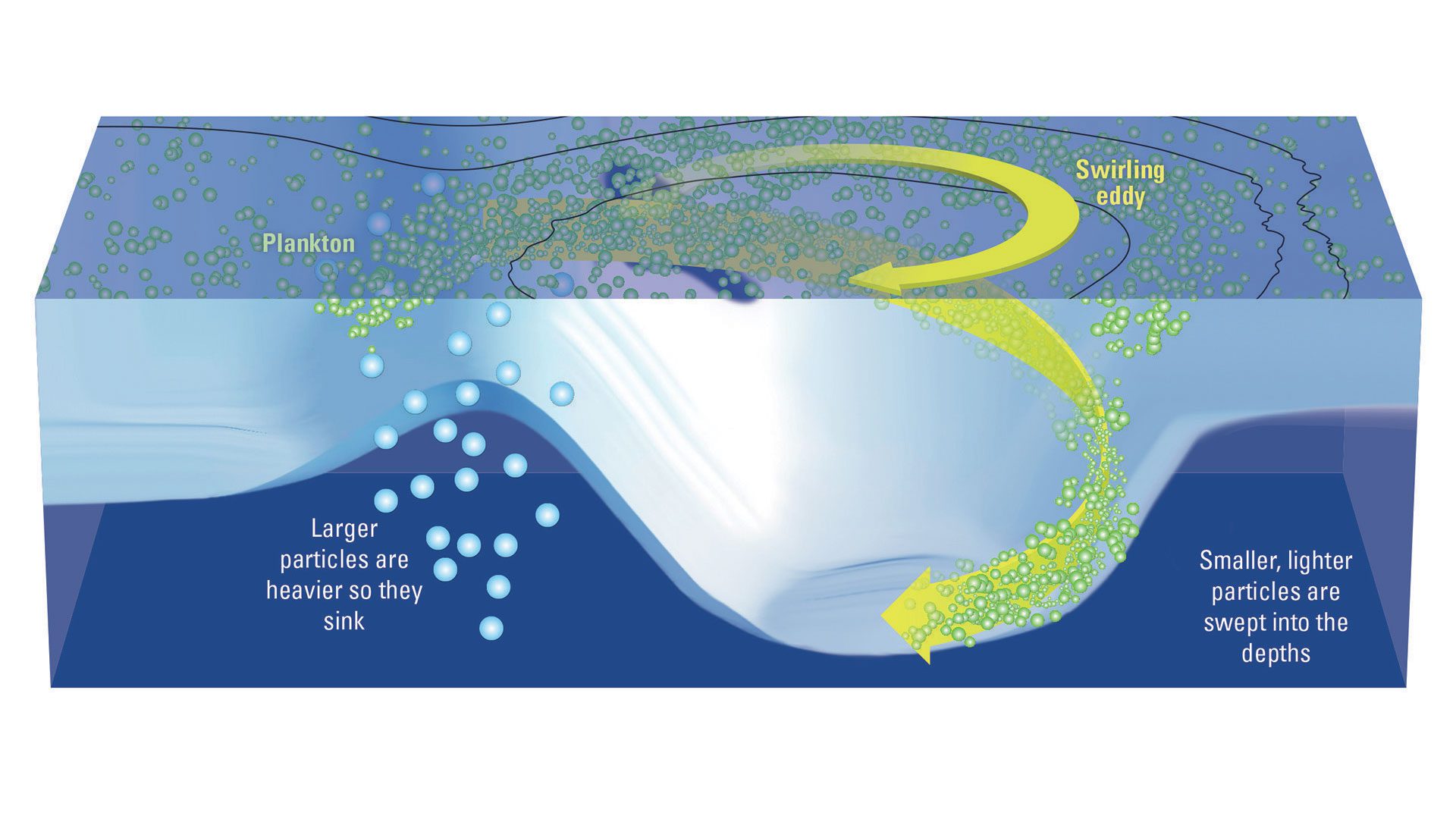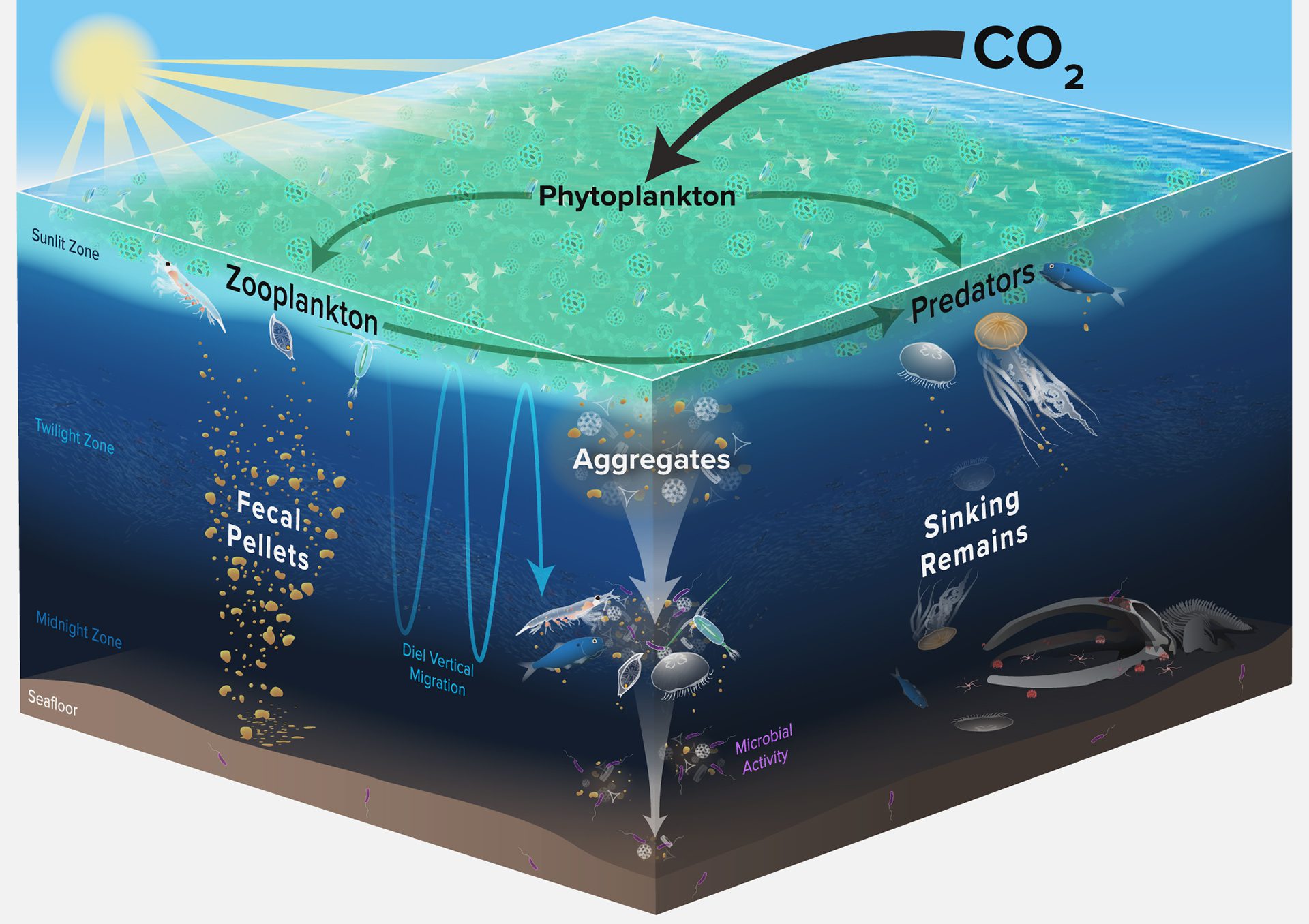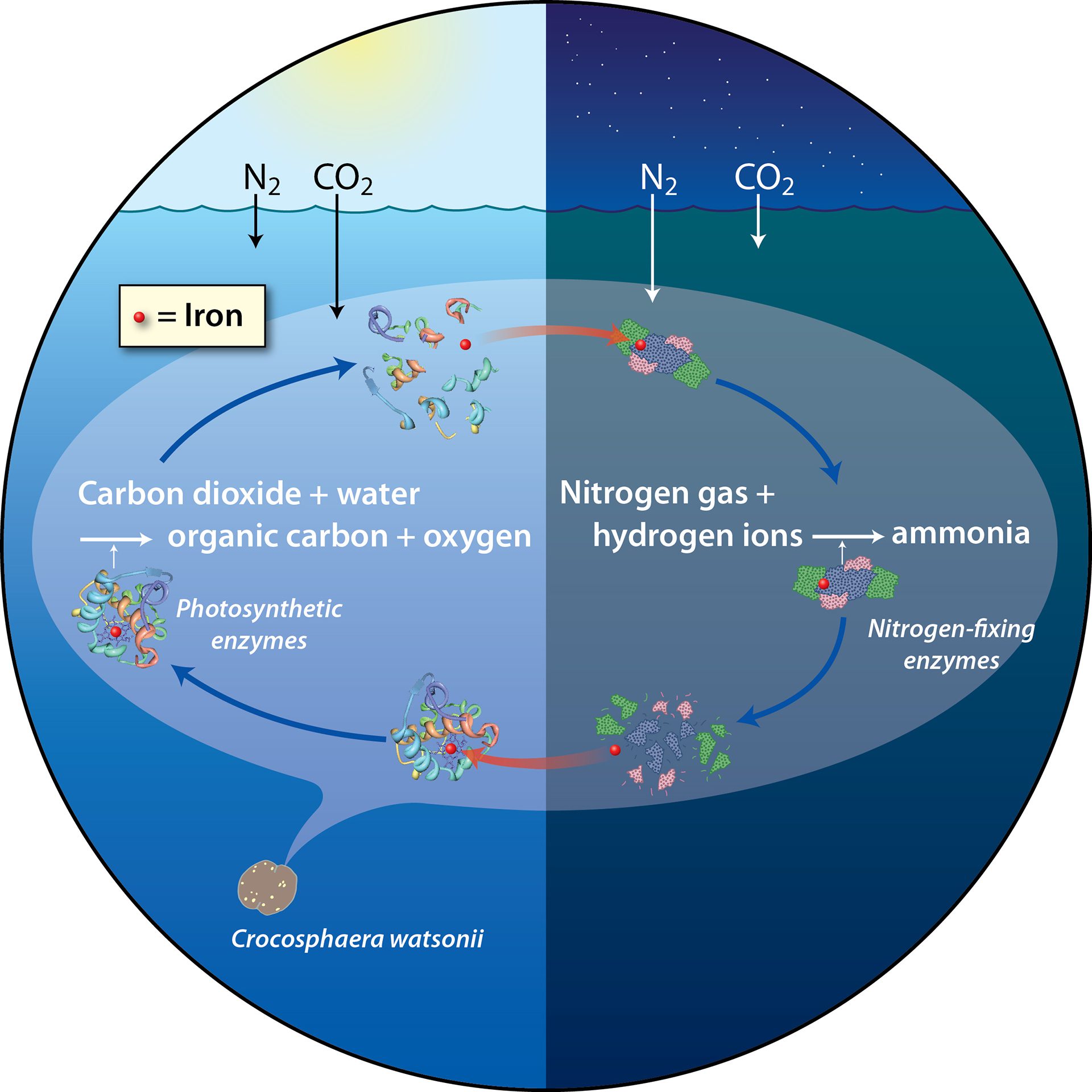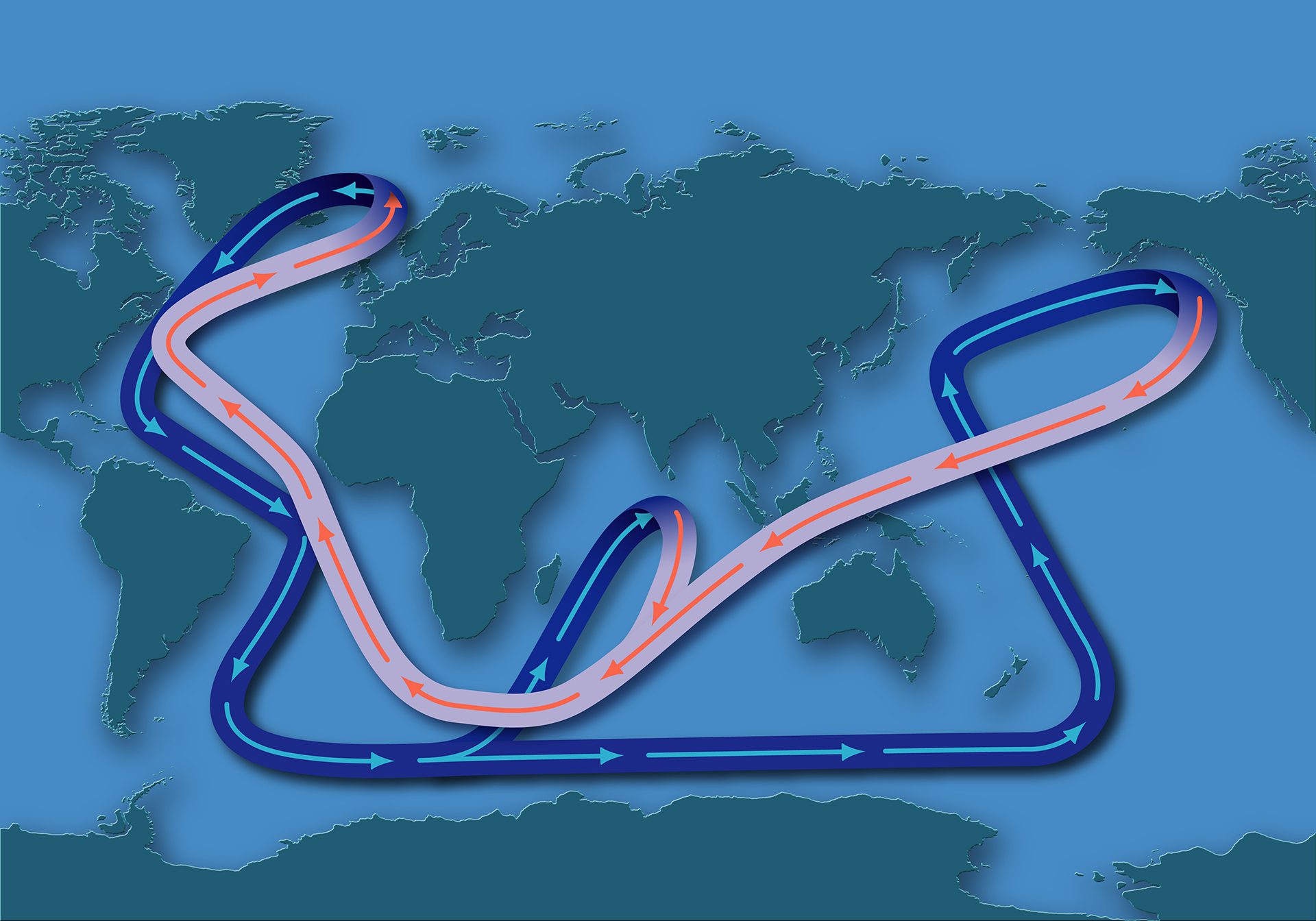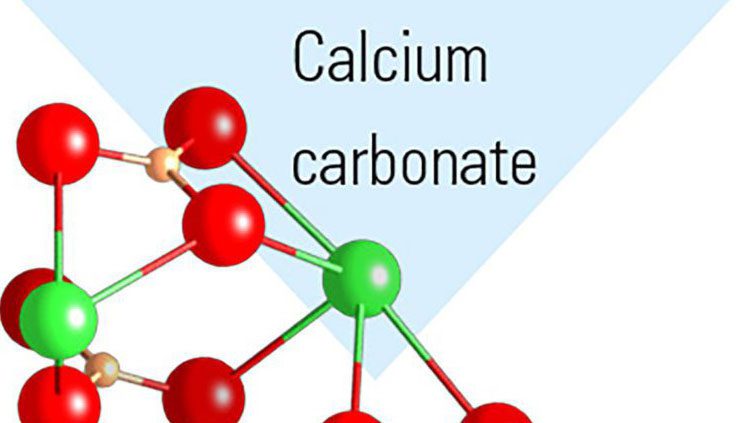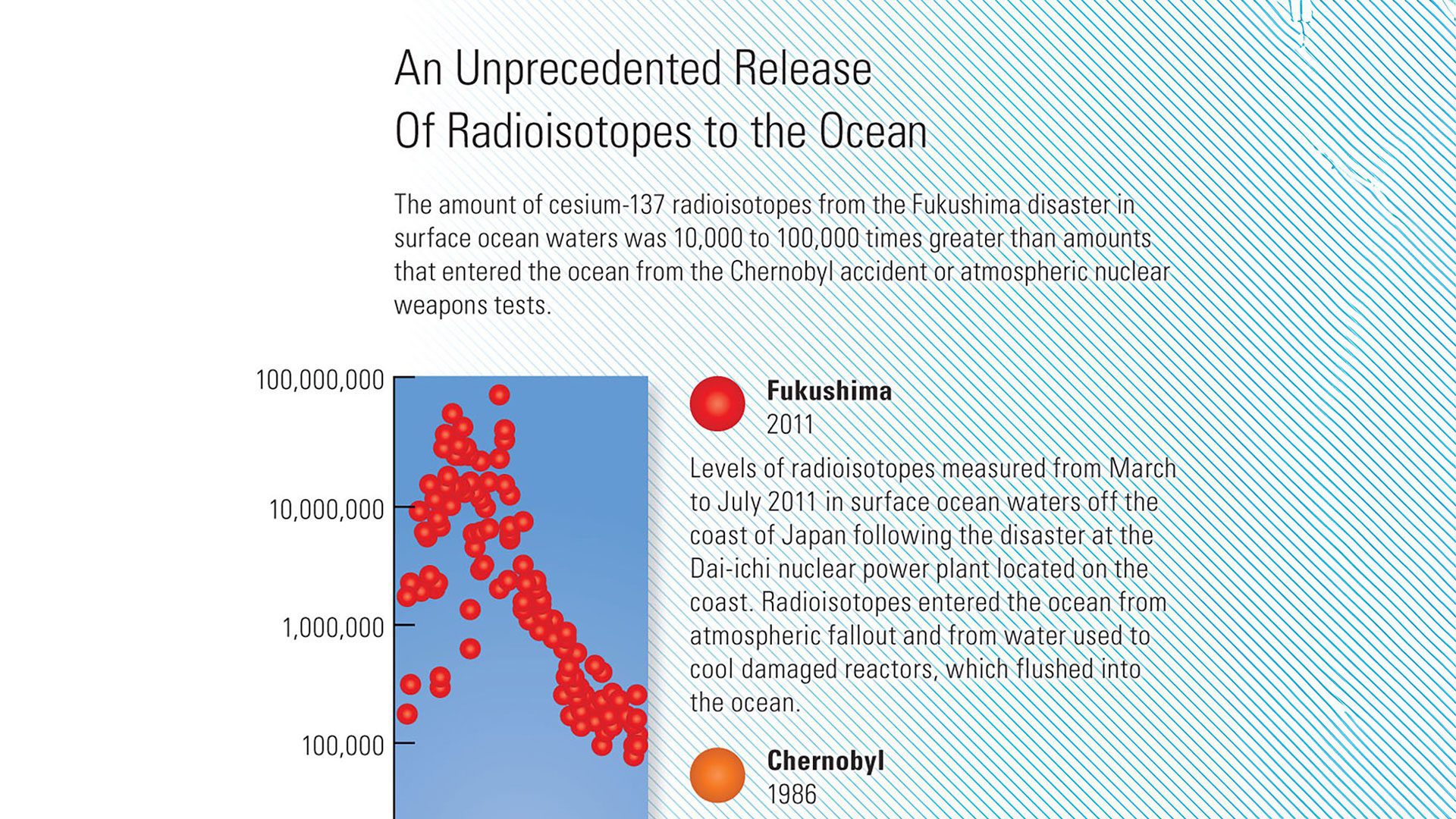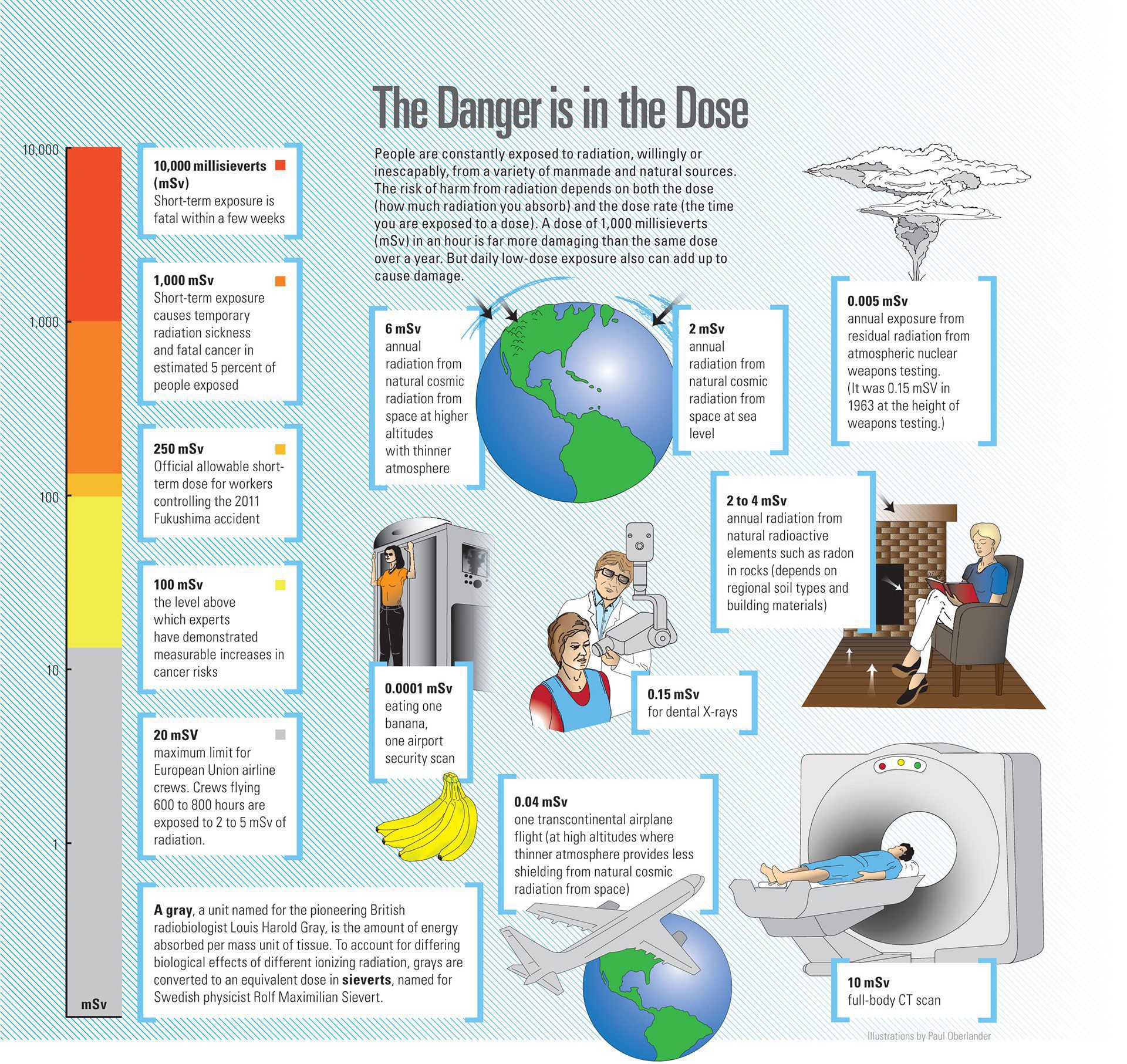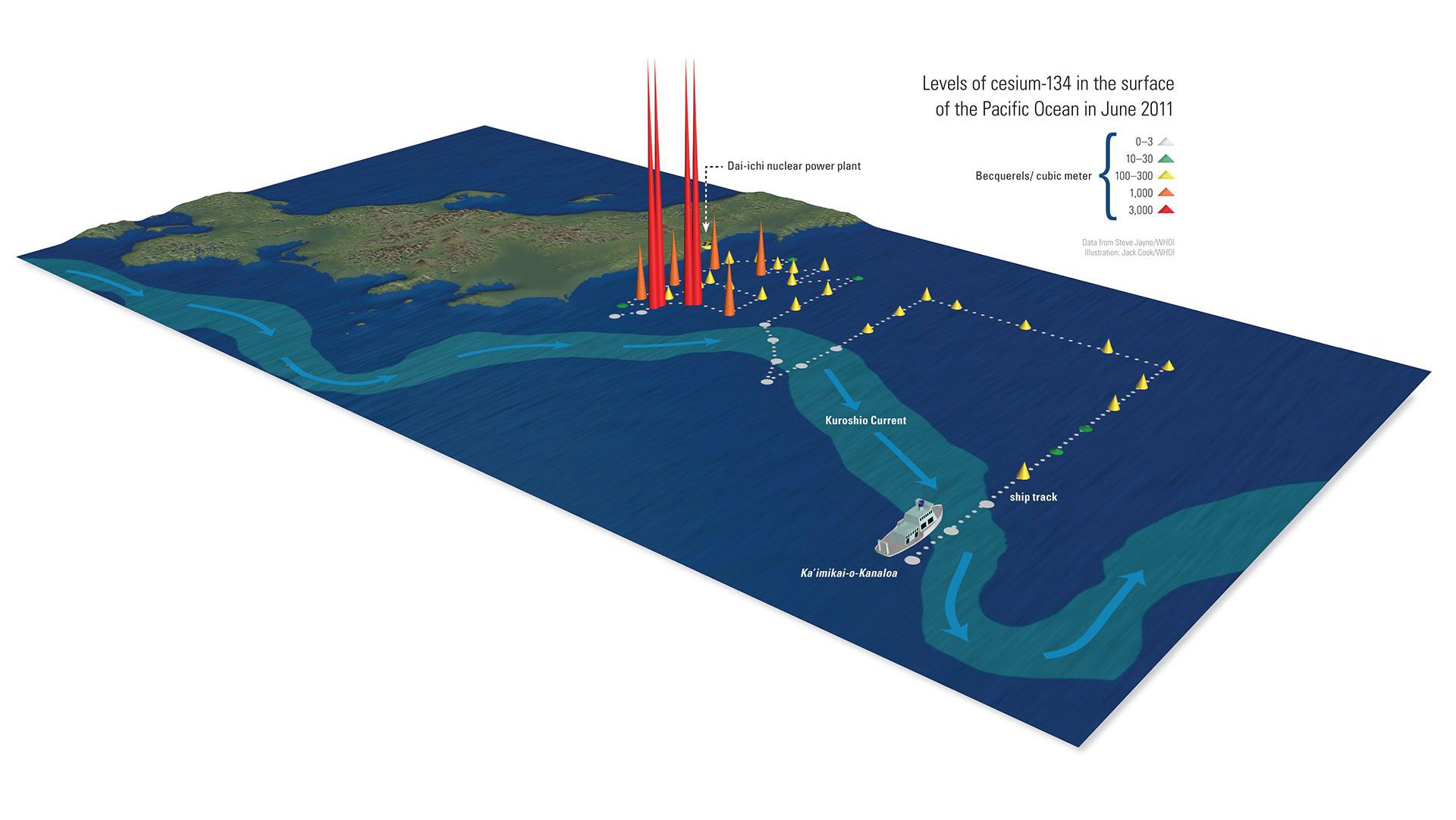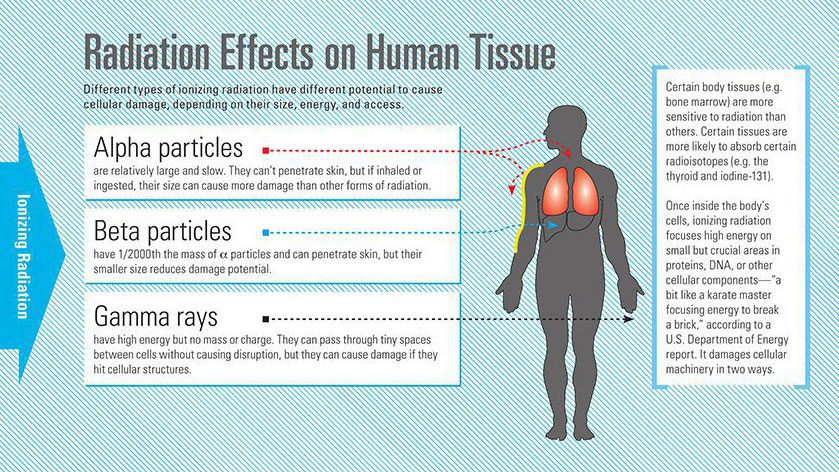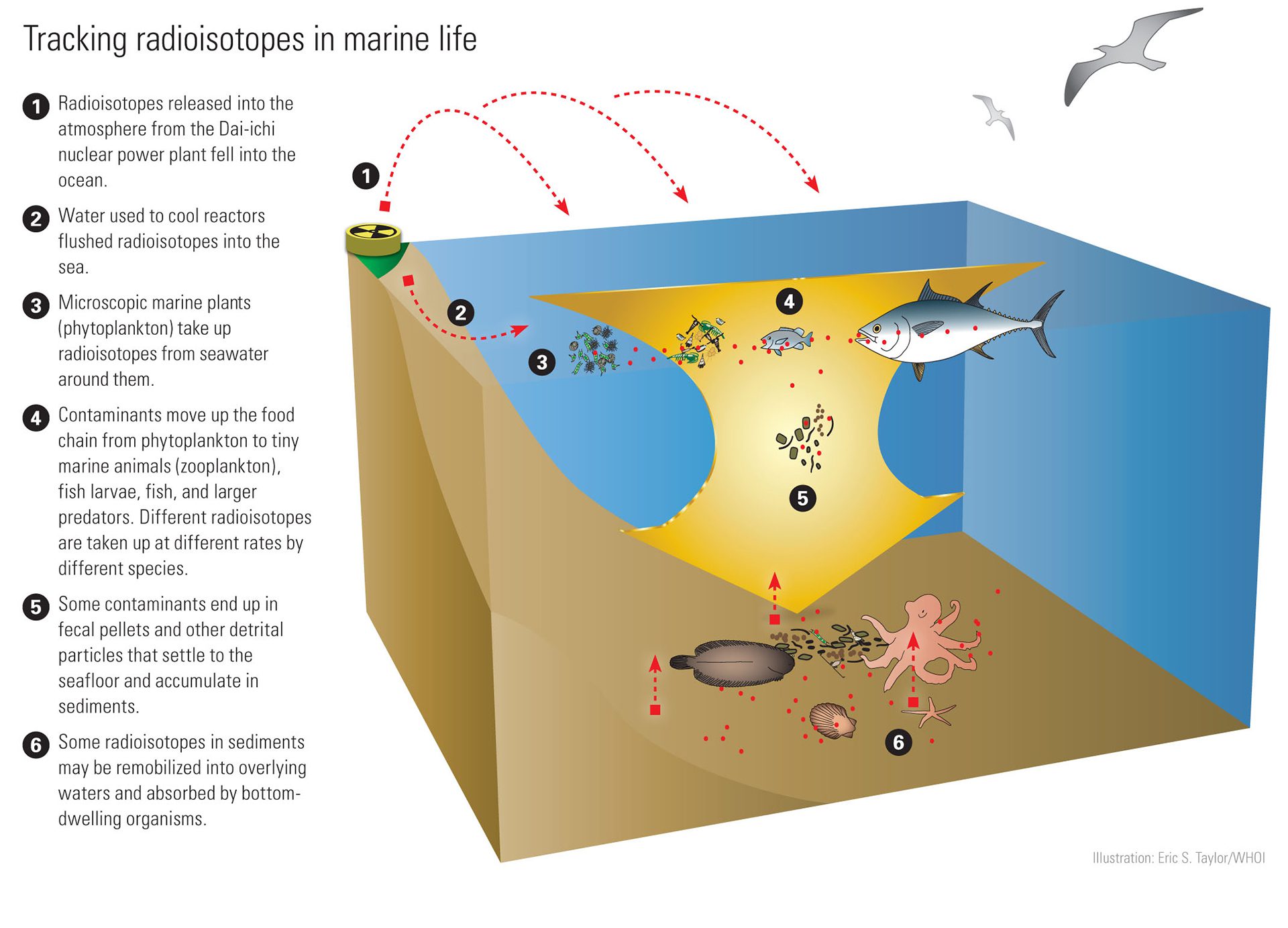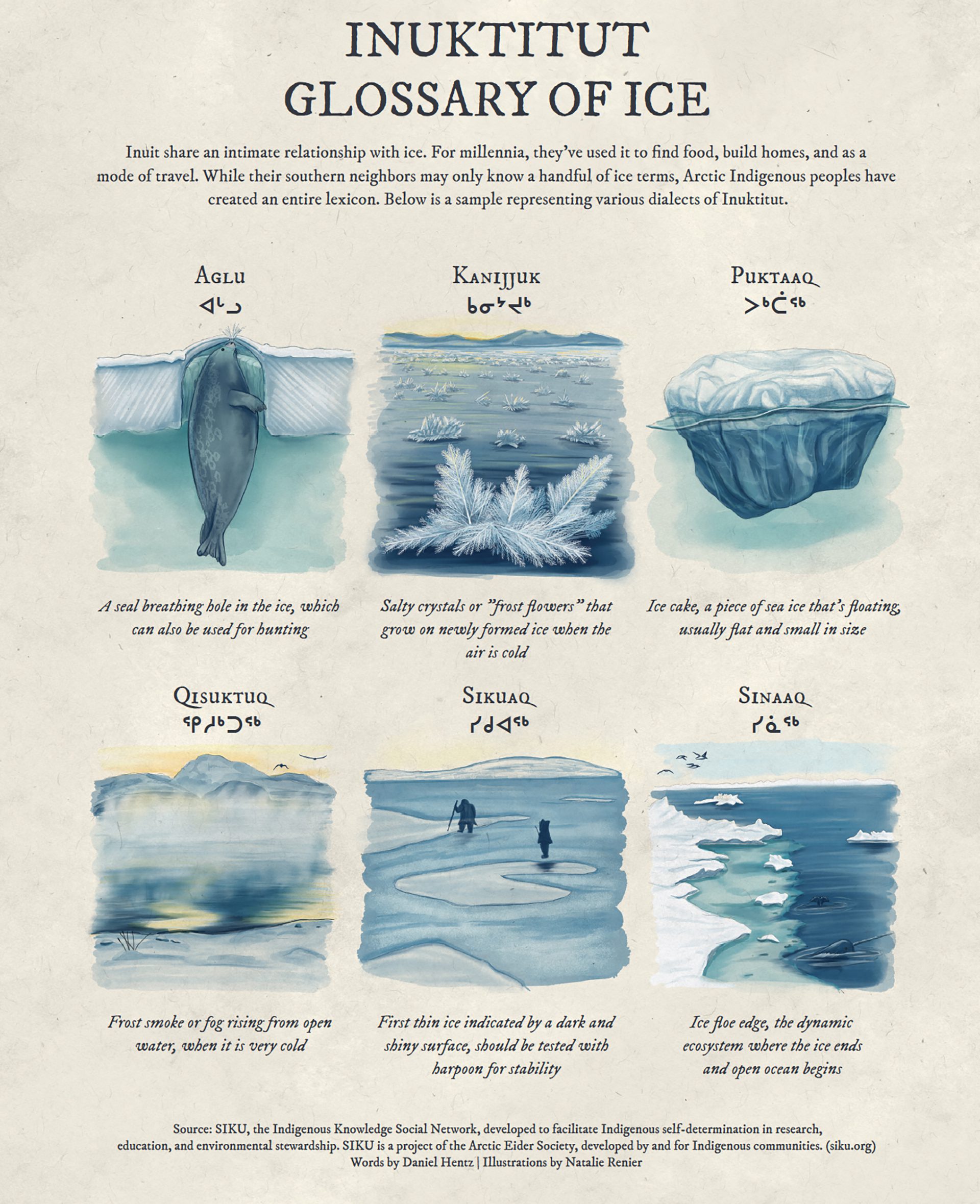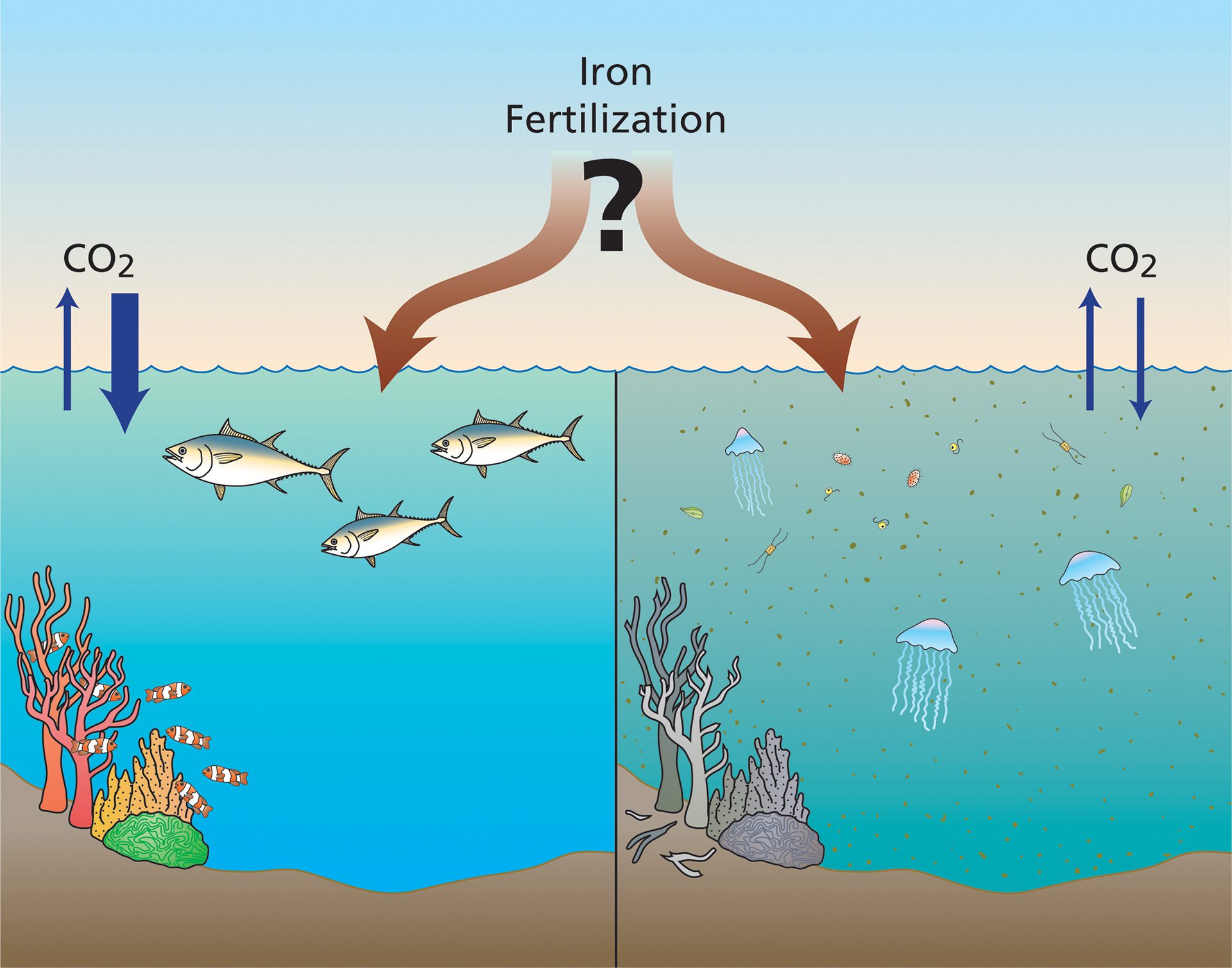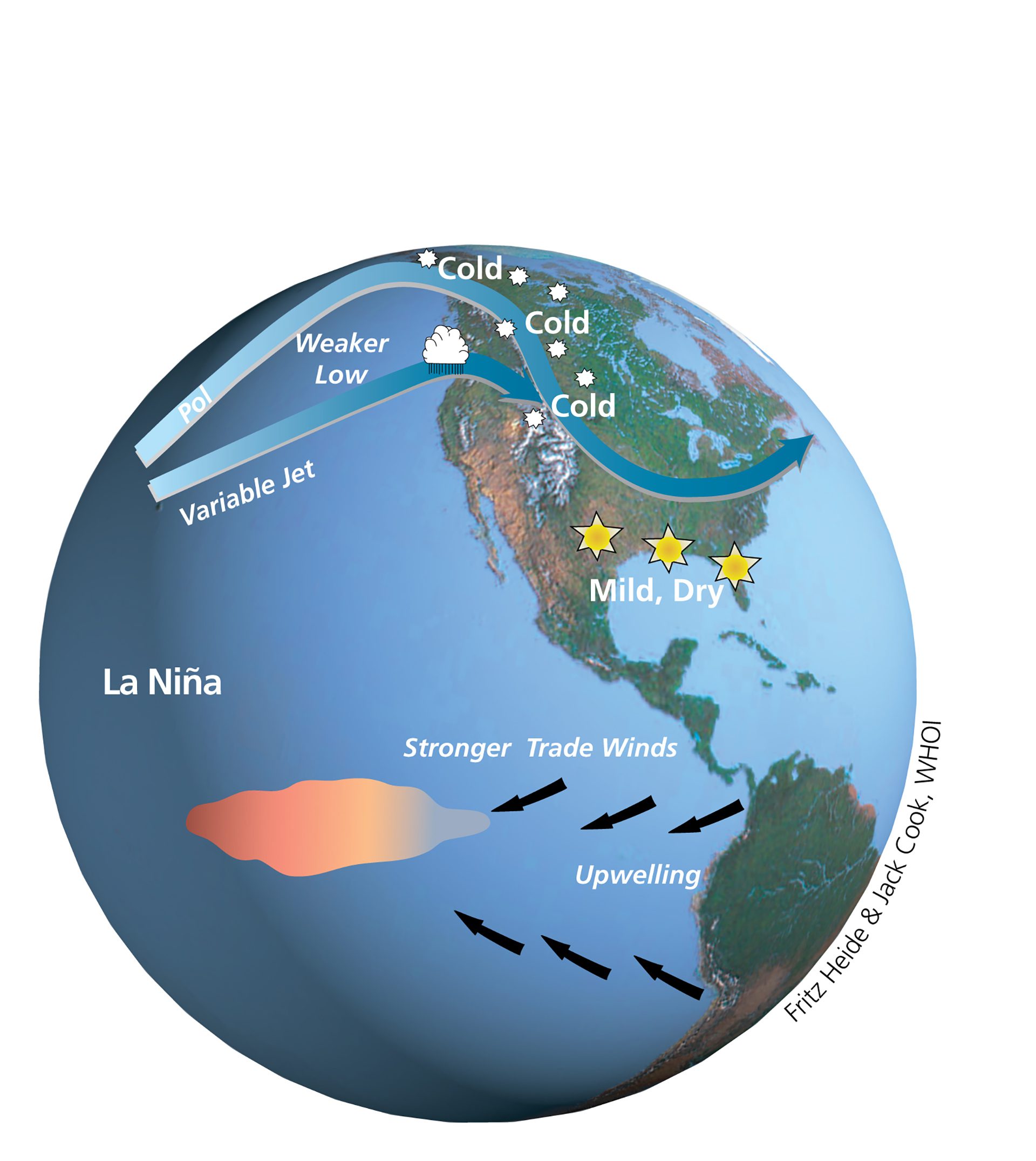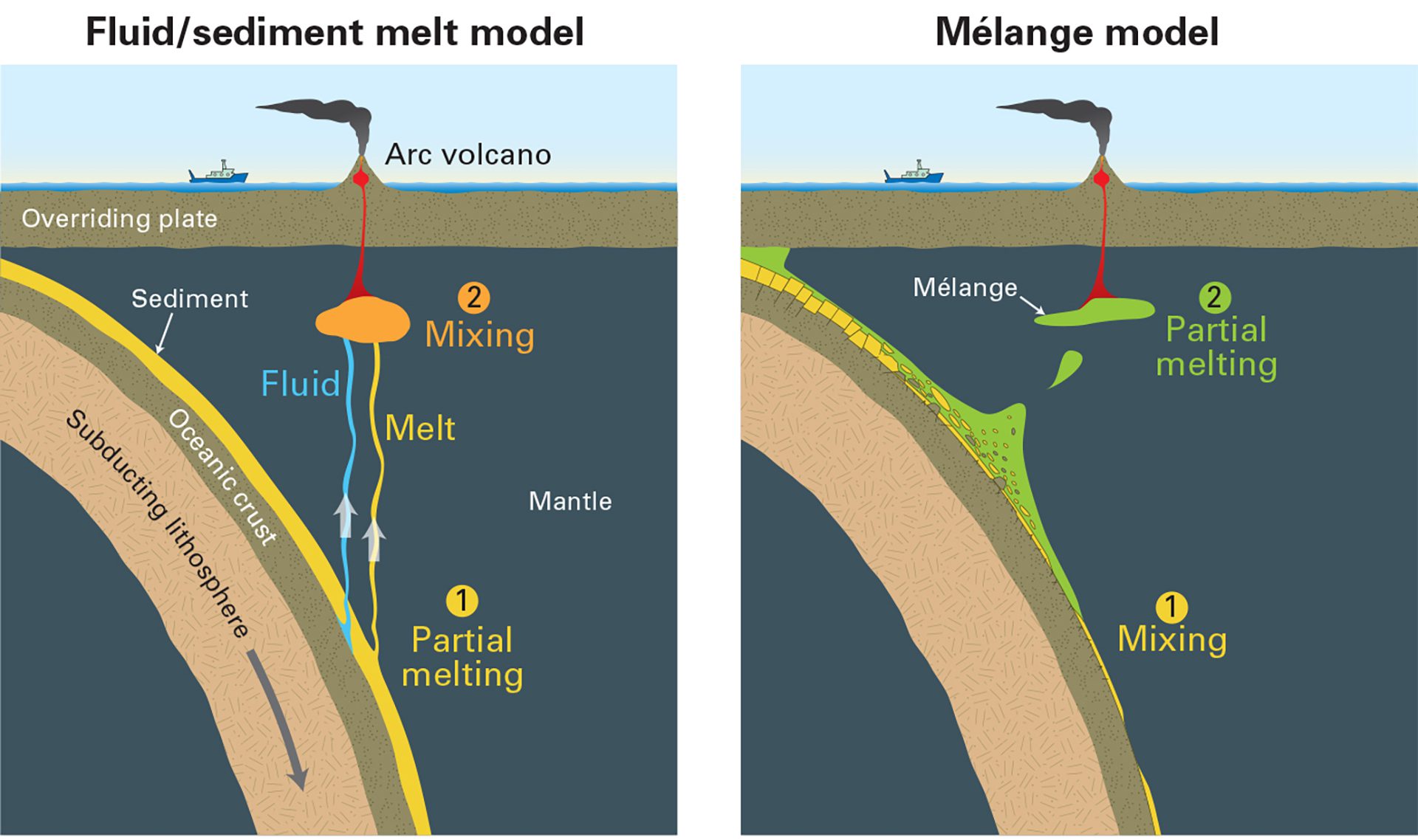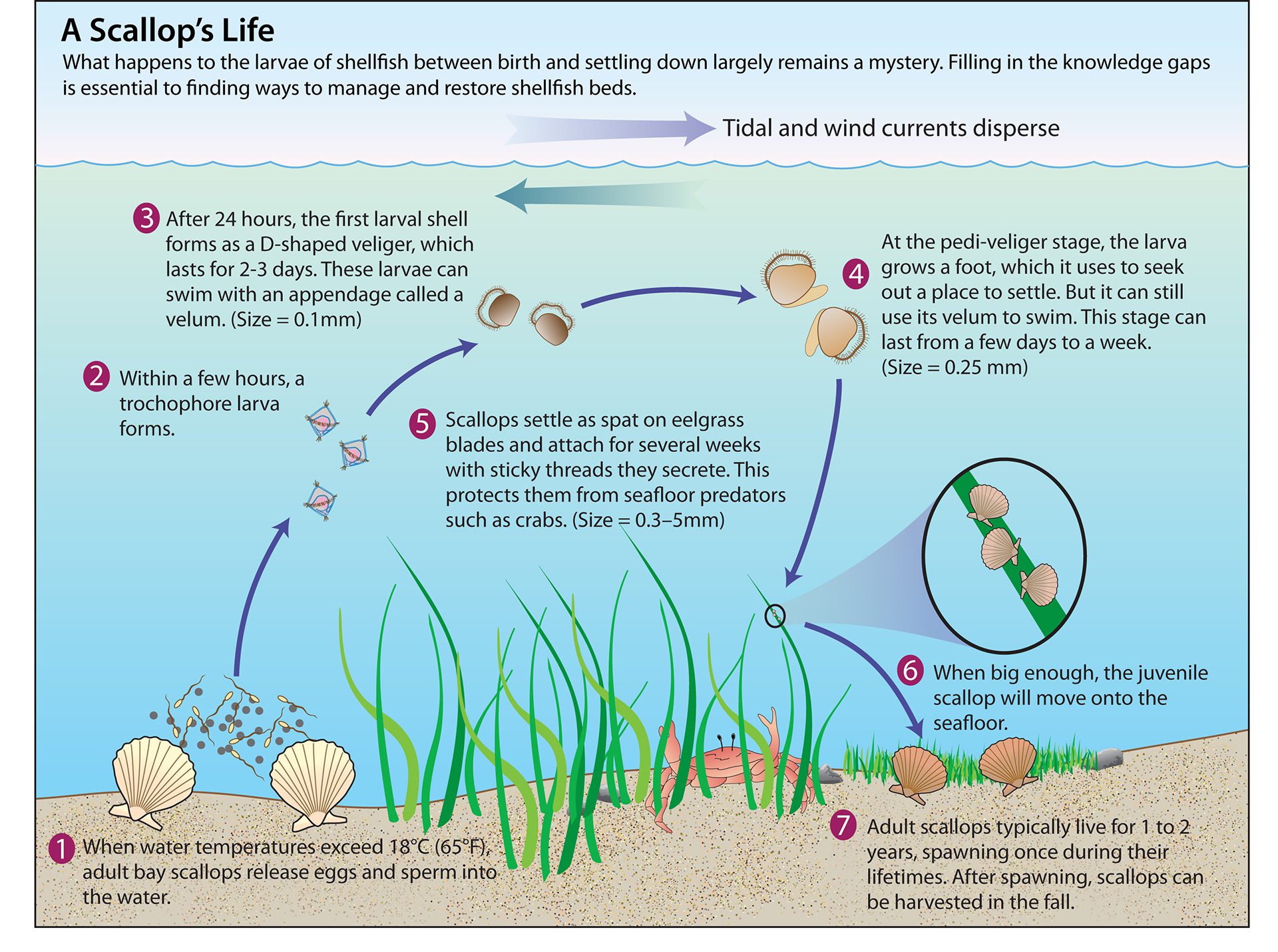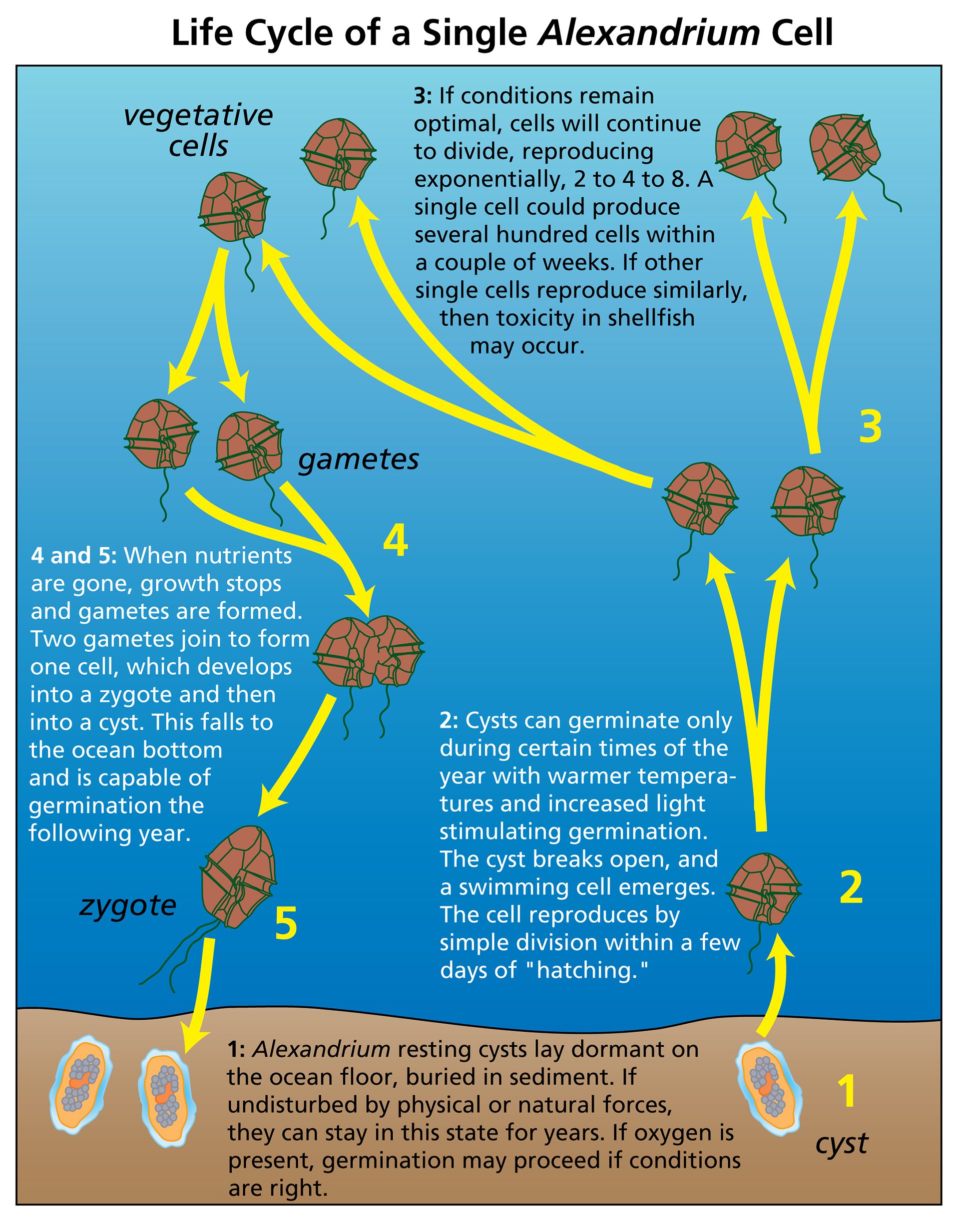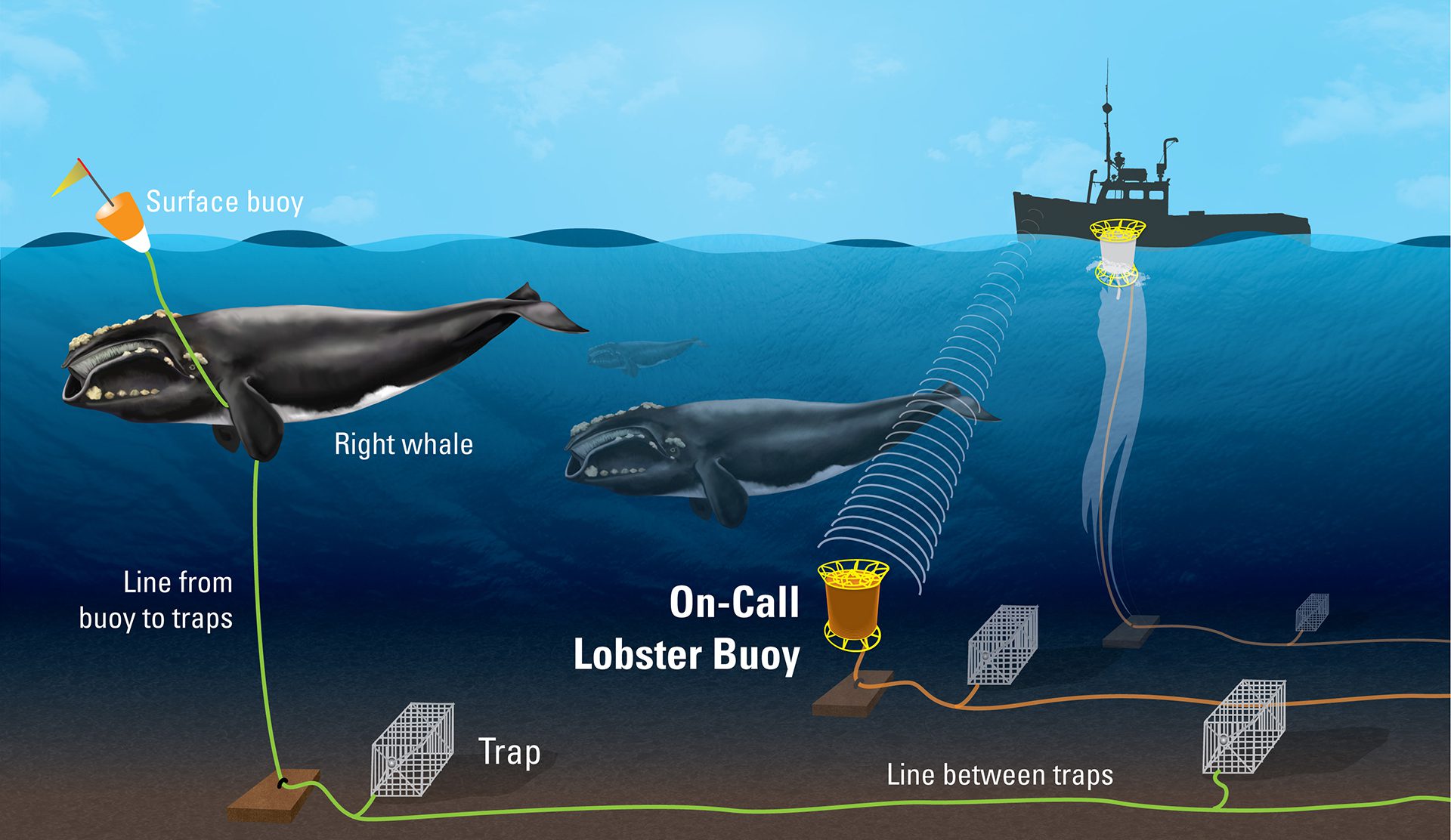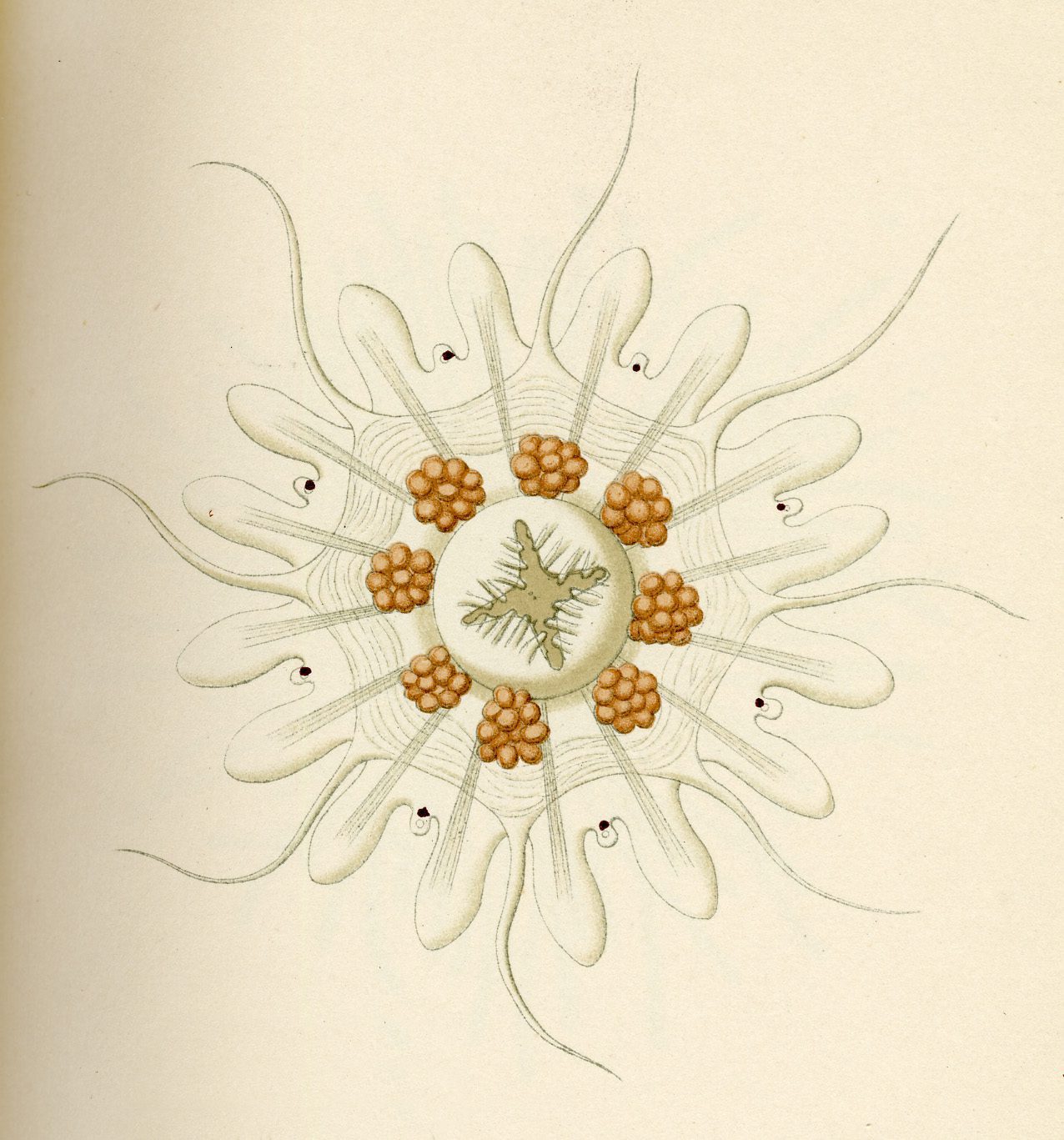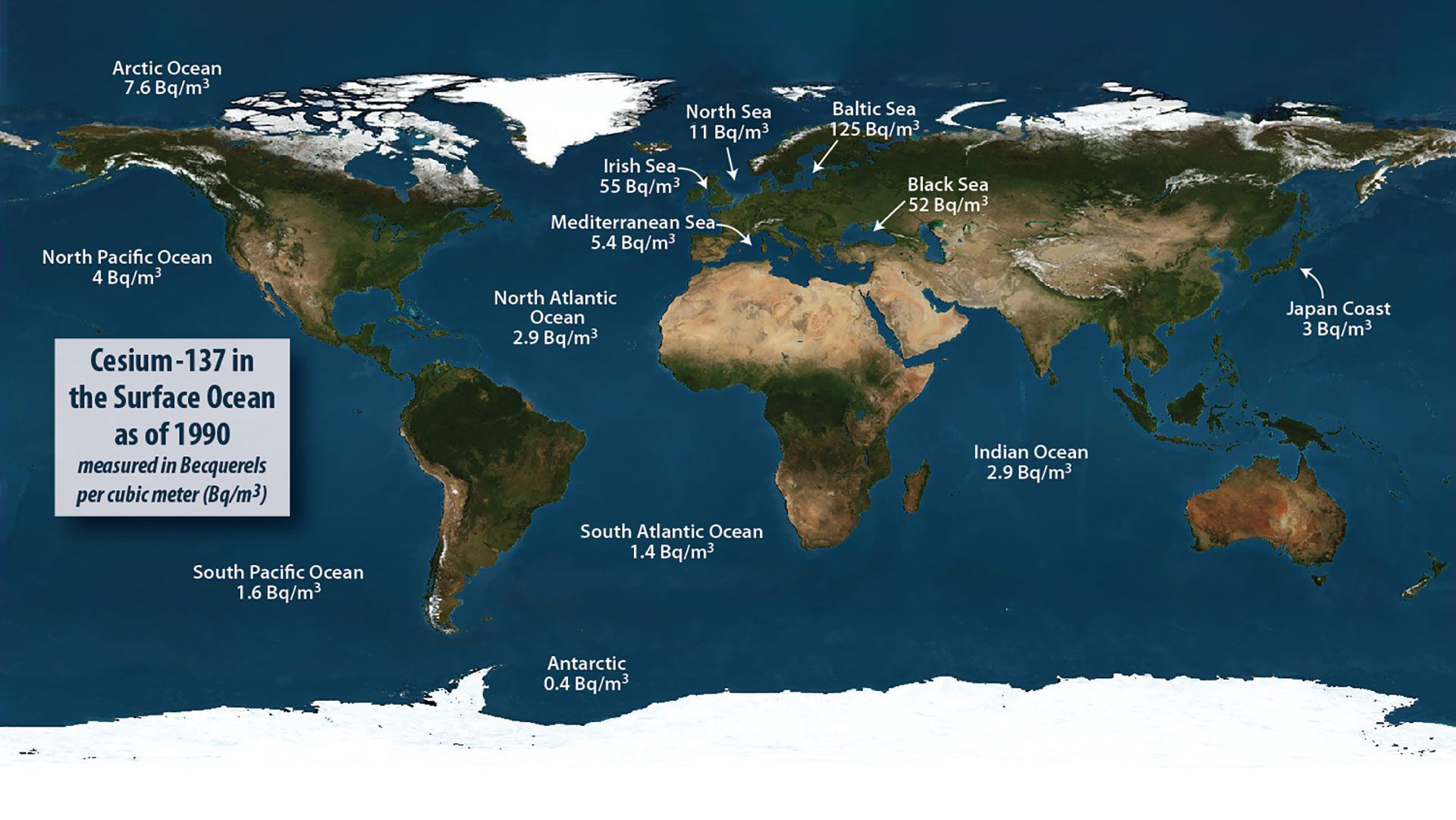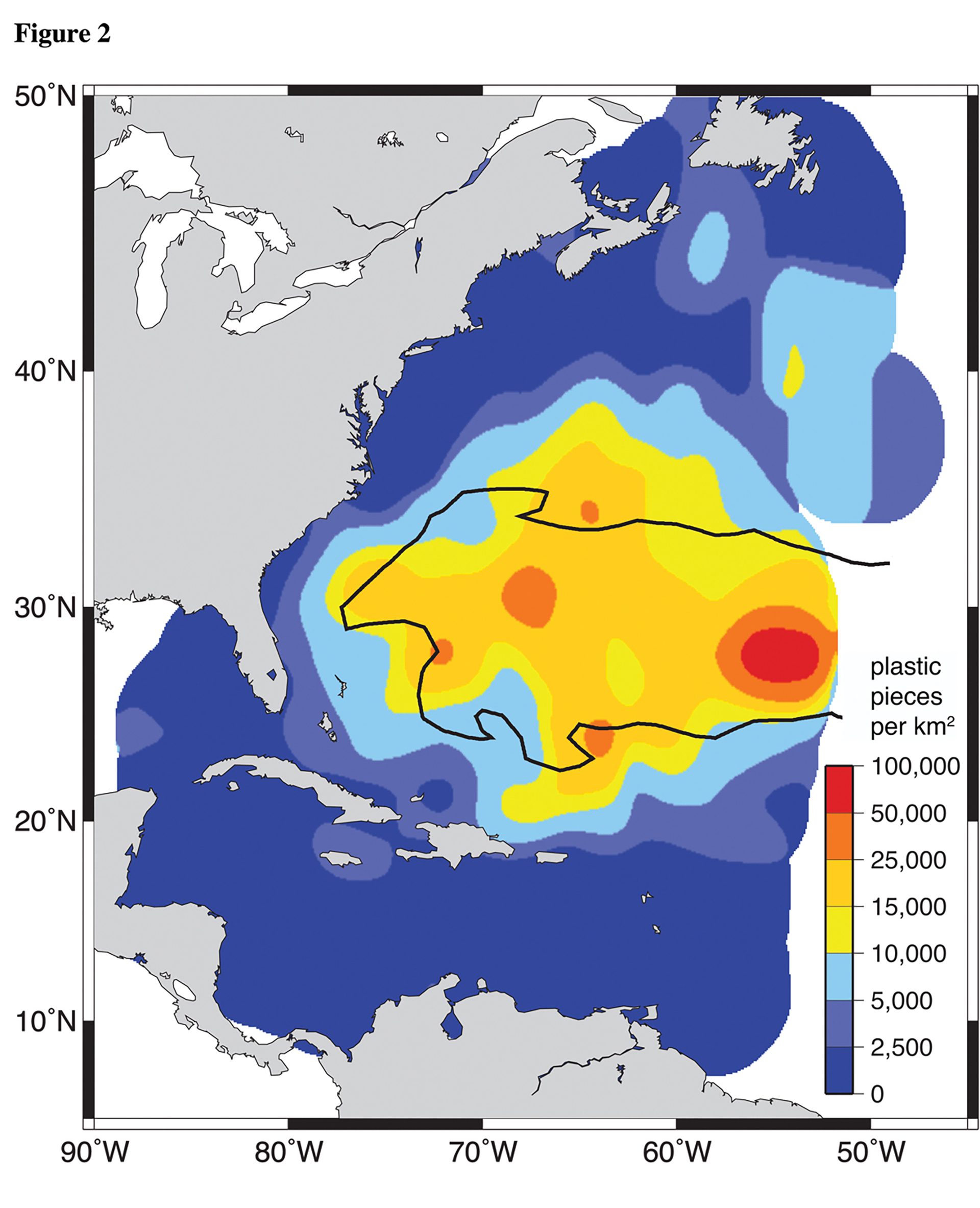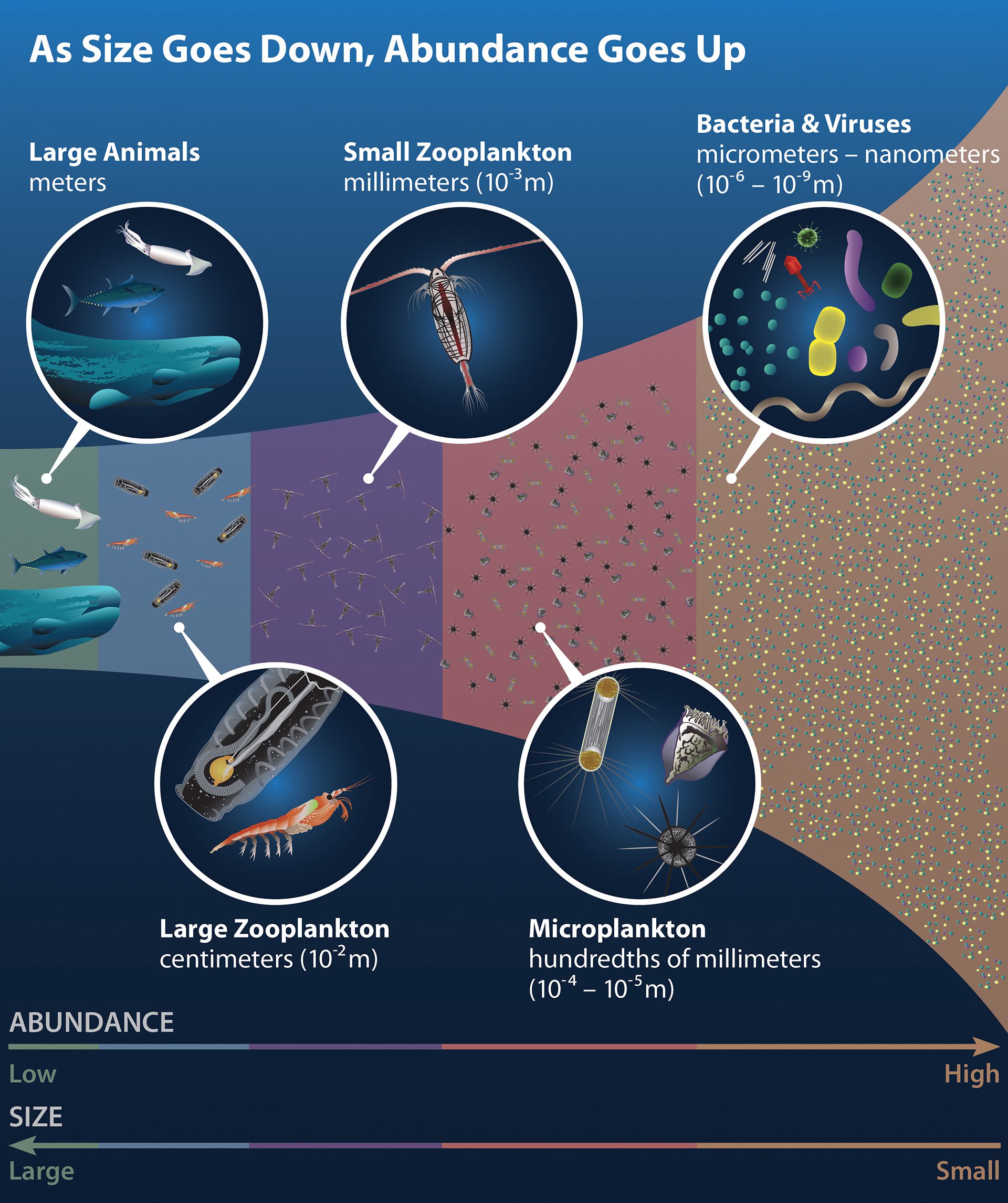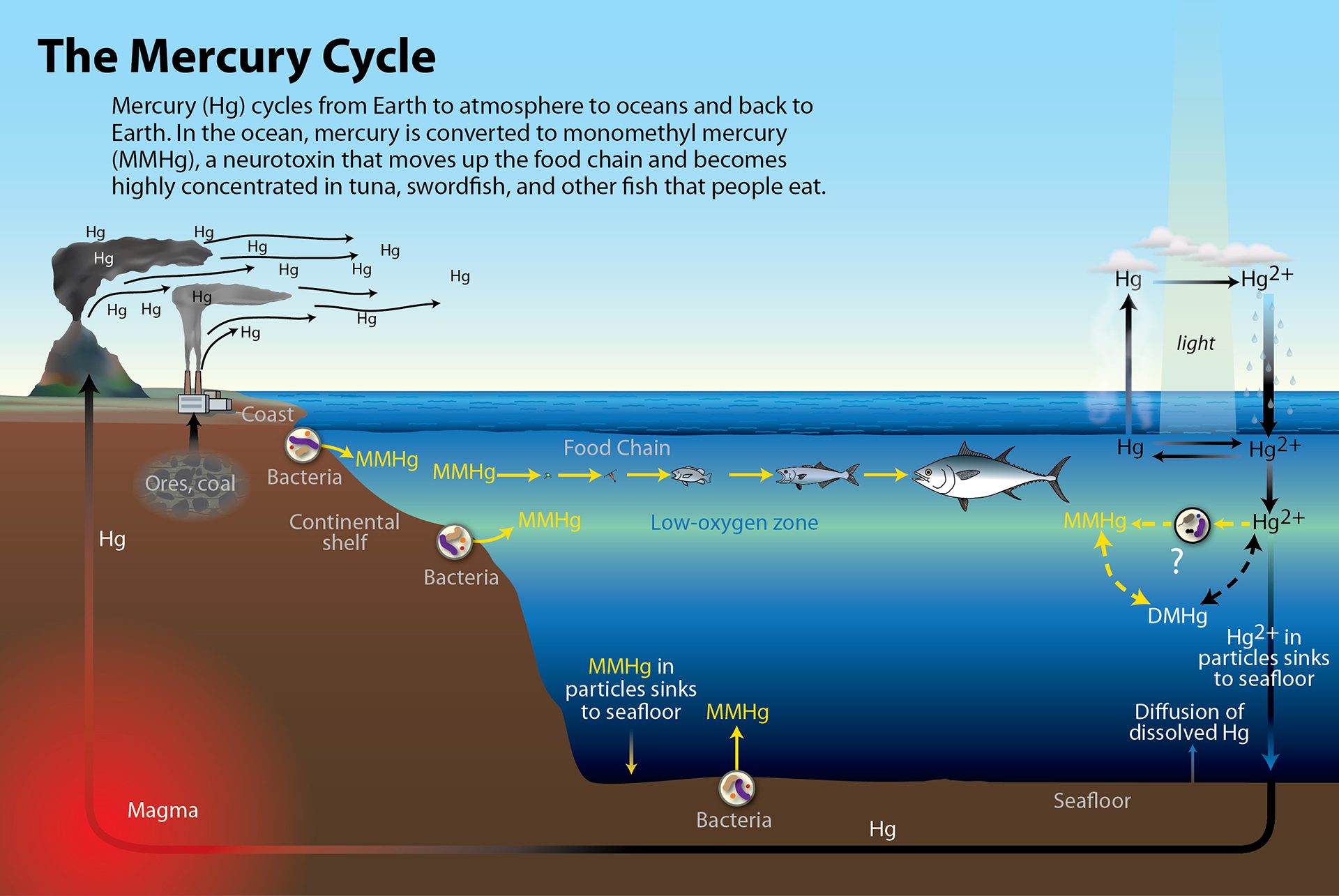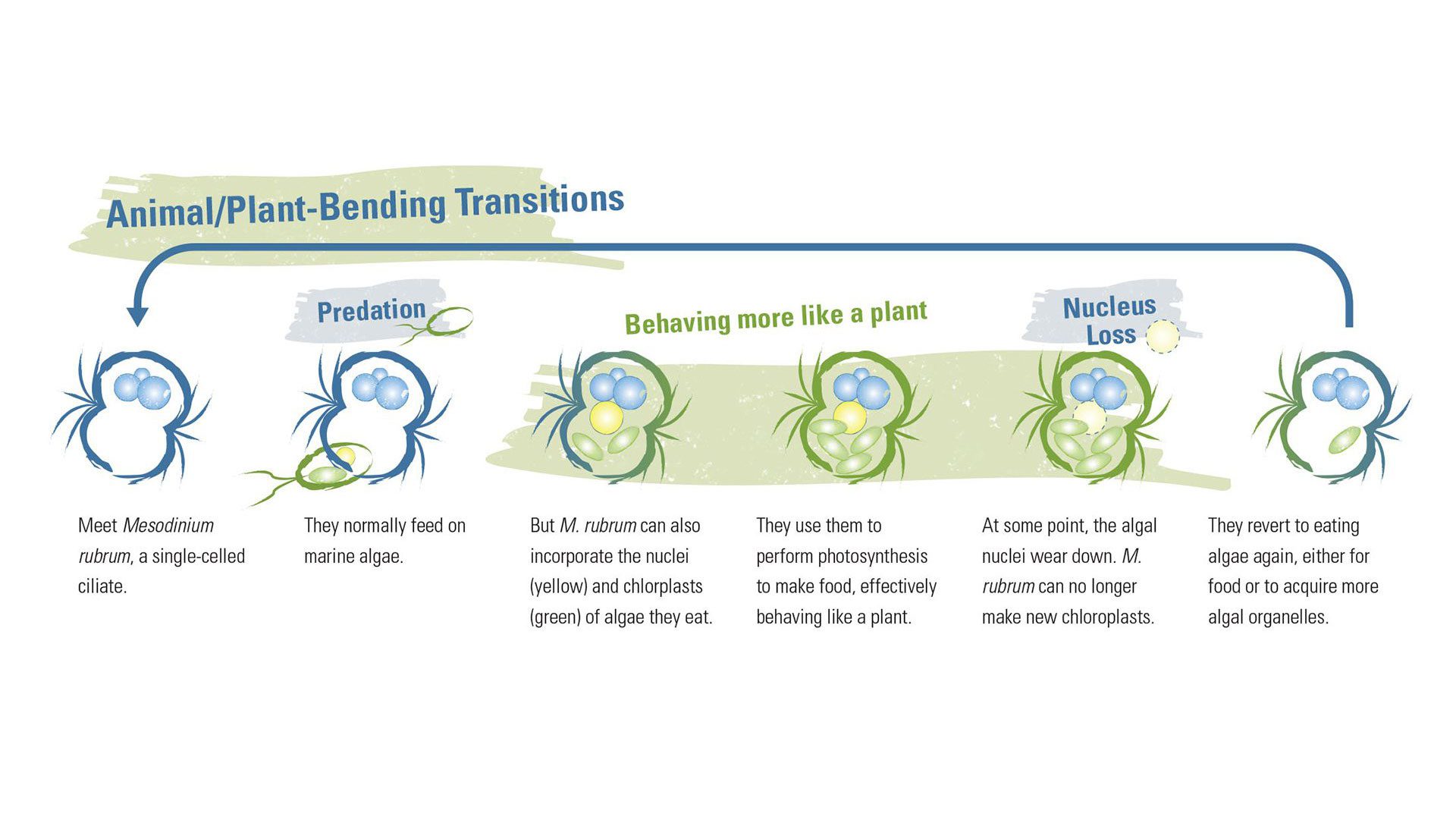Multimedia
Ocean-atmosphere interactions in the Northern Hemisphere
Global maps showing how atmospheric and ocean conditions interact in the Northern hemisphere, influencing sea surface temperature, weather patterns and climate.
Read MoreOcean eddies transporting plankton throughout the water column
Plankton help reduce atmospheric carbon dioxide by using it to grow. Larger particles sink to store carbon, while scientists study how smaller particles might also descend.
Read MoreOcean food web processes that drive carbon cycle
Ocean carbon cycles as phytoplankton convert CO2 into organic carbon, feeding zooplankton that respire CO2; some carbon sinks or is mixed into deeper ocean layers by various pumps.
Read MoreOcean iron recycling illustration
One ocean bacterium halves its iron needs by recycling enzymes—using iron-rich enzymes for photosynthesis by day, then switching to others for ammonia production at night.
Read MoreOceanic conveyor belt
Global map showing ocean current temperatures and flow patterns, illustrating a conveyor beltlike connection across the world’s oceans.
Read MoreCalcium carbonate skeleton formation
Corals build skeletons from calcium and carbonate ions, but lower ocean pH reduces carbonate availability, making it harder for corals to grow their skeletons.
Read MoreInfographic measuring amount of radioisotopes at 3 different nuclear disasters
The Fukushima disaster resulted in an unprecedented release of radioisotopes into the ocean.
Read MoreInfographic showing different levels of radiation doses
People are constantly exposed to radiation from a variety of manmade and natural sources. The risk of harm from the radiation depends on both the dose and the dose rate.
Read MoreJune 2011 Cesium-134 levels in the Pacific
Researchers on the Kaimikai o-Kanaloa found the Kuroshio Current blocked the southward flow of radioisotopes, trapping high levels south of Fukushima.
Read MoreInfographic showing the effects of radiation on human tissue
Different types of ionizing radiation have different potential to cause cellular damage, depending on their size, energy, and access.
Read MoreInfographic tracking radioisotopes in marine life
The Fukushima nuclear disaster delivered an unprecedented amount of radioactivity into the sea—here’s how that radiation impacted the marine food chain.
Read MoreInuktitut Glossary of Ice
Inuit have created an entire lexicon of words for ice, here are a few examples.
Read MoreIron fertilization consideration
Iron fertilization is a Carbon Dioxide Removal technique that adds iron to the ocean’s surface, stimulating phytoplankton growth to help mitigate climate change.
Read MoreLa Nina
Global map illustrating changes in sea surface temperatures, wind, and weather patterns that define an El Niño event.
Read MoreLavas forming at volcanic arcs
A new study shows volcanic arc lavas may form from melting of mélange rocks at the slab-mantle boundary—reshaping our view of eruptions and earthquake risk.
Read MoreLife cycle of a scallop
What happens to the larvae of shellfish between birth and settling down largely remains a mystery. Finding out is essential to managing and restoring shellfish beds.
Read MoreLife cycle of dinoflagellate Alexandrium
The dinoflagellate Alexandrium grows, divides, and blooms in surface waters, then forms dormant cysts that settle on the seafloor to survive tough conditions.
Read MoreThe "on-call" buoy
Whales risk fatal entanglement in vertical ropes from lobster traps. The “on-call” buoy coils lines on a buoyant spool, eliminating dangerous vertical lines.
Read MoreMaldive medusae illustration
Marine biologist Henry Bigelow, WHOI’s first director, illustrated the Maldive medusae. His detailed, beautiful artwork of gelatinous marine life remains valued today.
Read MoreGlobal Map of Cesium-137 Levels in the Ocean
Map shows global ocean levels of Cesium-137, a radioactive isotope released from nuclear fission and major nuclear events like weapons tests and reactor accidents.
Read MorePlastic debris in the North Atlantic
Map of floating plastic debris collected over 22 years by students at sea shows high concentrations trapped in the slow-moving North Atlantic Subtropical Gyre.
Read MoreMarine Life Size vs Abundance
Ocean life spans from tiny bacteria and viruses to massive whales, with fewer larger animals. Most creatures prey on organisms just smaller than themselves in the food chain.
Read MoreMercury cycle illustration
Mercury cycles between Earth, air, and ocean, where it becomes toxic monomethylmercury that builds up in tuna, swordfish, and other fish we consume.
Read MoreMesodinium rubrum Animal/Plant-Bending Transitions
Mesodinium rubrum usually grow by eating algae, but it can also steal cellular machinery from algae and use it to make its own food via photosynthesis.
Read More
